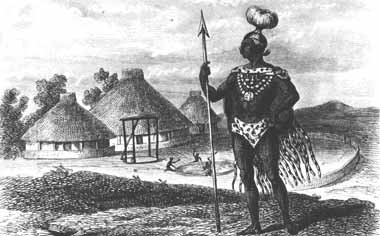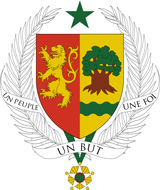The Senegal and Gambia rivers: to1894
For a vessel sailing down the west coast of Africa, the mouth of the Senegal river offers the first refreshing welcome after the parched territory of the western Sahara. Further south, round the difficult promontory of Cape Verde, is the even more enticing estuary of the Gambia. Here the channel is sufficiently broad and deep to carry even modern ocean-going vessels as far as 150 miles inland.

From the moment when Europeans begin exploring these regions, in the 15th century, these two great rivers attract their attention. For a century and more the Portuguese virtually have them to themselves. They reach the Senegal in 1444 and the Gambia in 1455.
In the 17th century the French and the British, by now imperial rivals, develop an interest in the two rivers. The French establish a trading station at the mouth of the Senegal in 1638. In 1659 they move it to St Louis, a more secure island. In 1677 they seize (from the Dutch) the island of Gorée, little more than a large rock off Cape Verde but of great value as a defensible trading station at this pivotal point on the coast.
Meanwhile the British have been concentrating their efforts on the Gambia. In 1661 Fort James is built on an island some seventeen miles upstream.
In the 1680s the French send a detachment from Gorée to establish a distinctly provocative settlement at Albreda on the north bank of the river opposite Fort James.
France and Britain are at this time on the verge of a century and a half of almost continuous warfare against each other. The fortified settlements in Africa change hands between the two nations again and again during the 18th century. The end result, by the mid-19th century, is that Britain is the established European power on the Gambia, with the valuable addition of Bathurst (now known as Banjul). This island in the mouth of the river is used from 1816 as a base against the slave trade.
Balancing this, France has the Senegal and the important outpost of Gorée between the two rivers. Moreover the French have been much more ambitious than the British in pressing inland. They establish a station at Médine, far up the Senegal, in the 1850s. In 1883 a French expedition reaches Bamako on the Niger. They effectively outflank the British, who restrict their interests to the banks of the Gambia.
As a result, when the scramble for Africa begins in 1884, the British are at a disadvantage. When boundaries are agreed between the two nations, in 1889, Britain secures only a narrow strip along each bank of the Gambia. This territory is entirely surrounded by French Senegal.
French West Africa: 1895-1960
The establishment of Senegal as a French colony is merely one part of the French colonial effort in west Africa during the 1880s and 1890s. By 1895 there are no fewer than six French colonies in the region, covering a vast unbroken stretch of the continent. In that year they are grouped together as French West Africa
Among them Senegal is the colony with the strongest French presence. Dakar, founded by the French in 1857 on the mainland opposite the island of Gorée, becomes the capital of the territory in 1902 (succeeding St Louis in the role). Senegal therefore remains at the centre of France's west African empire, until all the separate colonies win their independence in 1960.
Independence: from1960
The first president of independent Senegal, after the dissolution of French West Africa, is an experienced and distinguished politician within the French system. Léopold Senghor has been a socialist deputy for Senegal in the national assembly in Paris since 1946, and has played a part in drafting de Gaulle's new constitution of 1958.
In 1963 he provides Senegal with a constitution, modelled to some extent on de Gaulle's, with executive powers in the hands of the president. Senghor himself remains in office until resigning at the end of 1980. He is succeeded as president by Abdou Diouf (who is still head of state in 1999).
In 1976 Senghor authorizes the formation of two opposition parties, and in 1978 the first multiparty elections are held.
They have remained the norm in Senegal, though invariably won by the president's party (the Socialist Party). This prompts claims of electoral malpractice by the Democratic Party of Senegal and the Union for Democratic Renewal, who between them win only a small minority of seats in the national assembly.
An important element in the politics of Senegal is the fact that its territory surrounds the Gambia. From 1981, when Senegalese troops help to suppress a coup in the Gambia, there is an attempted federation of the the two nations. They unite in 1982 for many aspects of government, under the name Senegambia. But this awkward arrangement breaks down in 1989.
More lasting is the problem of a separatist movement within Caasamance, the large coastal region south of the Gambia. Violence here continues during the 1990s, while the government attempts to achieve a political settlement with the Movement of Democratic Forces of Casamance (MFDC).
[art#180:1512]





 Login with Facebook
Login with Facebook Sign in with Google
Sign in with Google